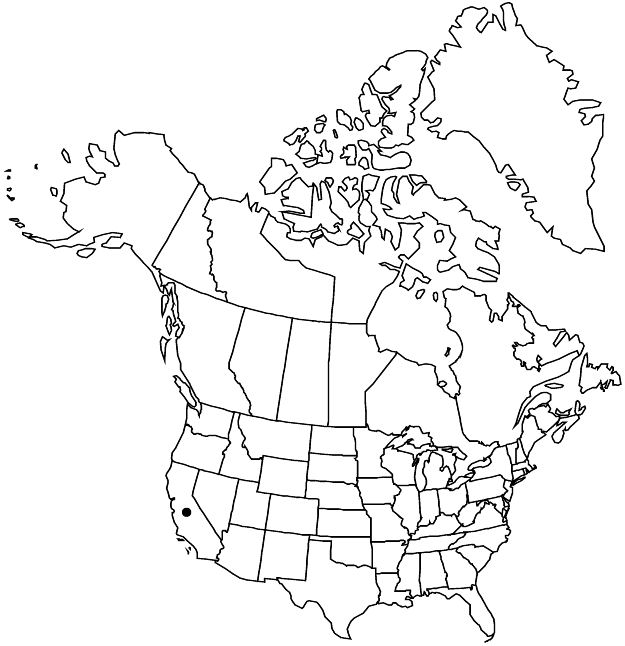Difference between revisions of "Ziziphus parryi"
Rep. U.S. Mex. Bound. 2(1): 46. 1859.
FNA>Volume Importer |
FNA>Volume Importer |
(No difference)
| |
Revision as of 18:17, 24 September 2019
Shrubs, 1–4 m; secondary branches pale greenish yellow to purplish, not pruinose, glabrous, thorn-tipped, axillary thorns solitary, with 0–1 nodes, without tertiary thorns, stipular spines absent. Leaves deciduous, alternate, sometimes fascicled; blades olive green, elliptic to obovate, 1–2.5(–3) cm, herbaceous, base obtuse to rounded, margins entire, apex rounded to cuneate or shallowly emarginate, surfaces glabrous; 1-veined. Inflorescences usually fascicles, 2–5-flowered, rarely flowers solitary. Flowers: hypanthium and sepals purplish to greenish; petals white. Drupes brownish to orange or purplish brown, ovoid to ellipsoid, 10–20(–25) mm.
Phenology: Flowering (Feb–)Mar–May.
Habitat: Chaparral, pinyon-juniper woodlands, rocky washes and arroyos, hill slopes.
Elevation: 600–1000(–1600) m.
Distribution

Calif., Mexico (Baja California).
Discussion
Ziziphus parryi is known in the flora area only from Imperial, Riverside, San Bernardino, and San Diego counties, but the distribution continues southward in Baja California as far as Cedros Island. Small-leaved plants from southern Baja California have been identified as Z. parryi var. microphylla, but similar variants occur sporadically into California.
Selected References
None.